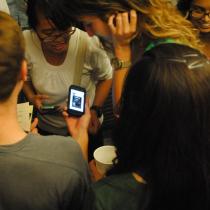What is ITALIC?
ITALIC is an arts-minded, residence-based academic program for freshmen. It’s built around a series of big questions about the historical, critical and practical purposes of art. It also builds community. This yearlong experience fosters close exchanges among faculty, students, guest artists and scholars in class, over meals and during excursions to arts events. We’ll trace the challenges that works of art have presented to history, politics, culture, science, medicine, and law, particularly since the 19th century. We’ll look at ways arts can inform creative problem-solving, confront uncertainty and ambiguity, and experiment with different sets of rules. Through rigorous inquiry, ITALIC seeks to create new frameworks for exploring our (and others’) experience.
To learn more about the program, see the recent Stanford News and San Francisco Chronicle profiles of ITALIC. Watch a view about ITALIC here.
ITALIC Community
ITALIC welcomes freshmen of all academic interests and talents—no previous art experience necessary. We have a mix of students who plan to work in the sciences, or engineering, or the humanities, as well as studio art or art history. But if you already enjoy working with visual media, sound and music, film and theater, digital art or comics, ITALIC provides an environment where you can continue. Through ITALIC you’ll discover ways that art already exists in your life, and you’ll learn how to approach your chosen field with a greater sense of exploration, experimentation, and creativity.
Residence Based Learning
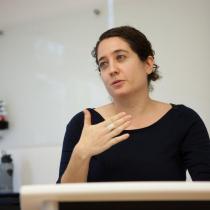
You’ll live and learn together in Burbank House. Lectures, sections, arts workshops, guest talks and student creative work will take place in a cluster of on-site seminar and practice rooms dedicated to Burbank Residents.
You and your classmates will closely read and analyze canonical works of theatre, film, dance, music and visual arts as well as analyze street art, comics, and popular culture. An intellectually stimulating conversation might carry on from class to the dining room and even back to the dorm late at night. Dinners with visiting arts critics, scholars and artists will develop these dialogues further.
Stern Hall
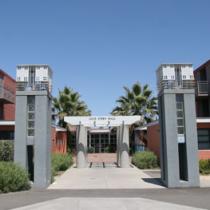
Burbank House, ITALIC’s home, is located in the all-freshman dormitory complex Stern Hall, on the east side of Stanford’s campus. ITALIC shares living and working spaces with another Burbank Integrated Learning Environment program, SIMILE, which is organized around the history of science.
A World of Art, and the Arts on Campus

As an ITALIC student, you will experience the performing arts in the Bay Area and on campus. You’ll attend ballets, operas, and concerts and visit museums, galleries, and digital filmmaking and animation studios. Collaborations with the Cantor Arts Center and the Bing Concert Hall will be part of the experience, as will work with the McMurtry Building, the future home of art history and film studies at Stanford. Each quarter, you’ll meet a distinguished guest artist who will be in residence, participate in lecture and/or sections, and give special workshops in Burbank House. During the 2013-14 academic year, ITALIC hosted New York Timesand Artforumcontributor Claudia LaRocca, as well as comedian Tig Noraro. During Spring Quarter, an ITALIC field trip to Los Angeles will test classroom skills in a real-world cultural context.
Doing, Receiving, and Writing about Art
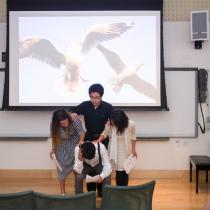
ITALIC combines hands-on creative expression with analytic and historical engagement with works of art. Outside of lectures and discussions, you’ll meet in the specific spaces on campus where the arts are practiced and received. Each quarter you’ll complete a “doing” project that will thread the issues from course readings and lectures into an experiential mode.
The class will go as a group to select performances and exhibitions at local performing arts institutions including Berkeley Repertory Theatre, San Francisco Opera, San Francisco Ballet, Magic Theater, San Francisco Symphony, Stanford Theatre, and SFMOMA.
ITALIC fulfills the PWR 1 requirement (15 students each quarter will take the additional 4 units to complete the course) and accordingly assignments will be focused on teaching you how to gather, evaluate, respond to and contextualize a range of sources as you incorporate class experiences and information into your own writing. Each quarter you’ll complete a minimum of 25-30 pages of polished final-draft writing. You’ll also explore more informal modes of writing as well as critical responses, research-based cultural and historical papers, and one collaborative response to a work of art or popular culture.
Preparation for the undergraduate career
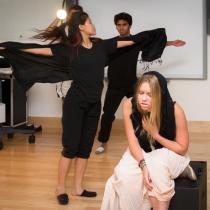
ITALIC develops critical reading, writing, and speaking skills that prepare students for excellence in their subsequent studies. Students receive individualized writing instruction all year long from ITALIC instructors. In seminars, students learn effective ways of contributing to discussions and of disagreeing with fellow discussants in a respectful and productive way.


